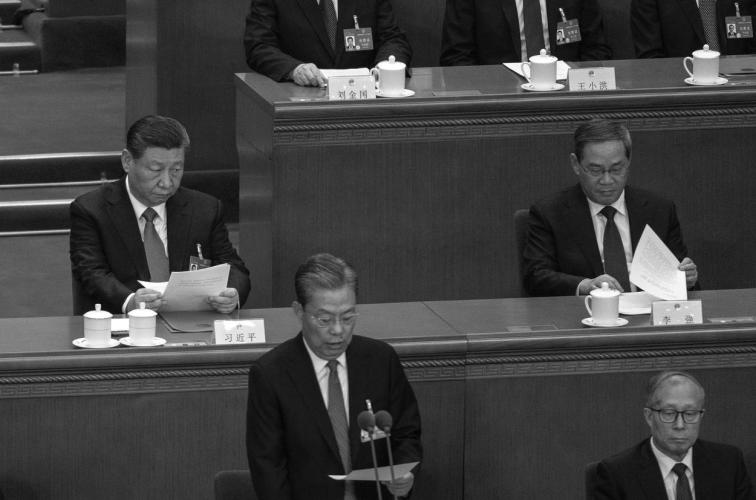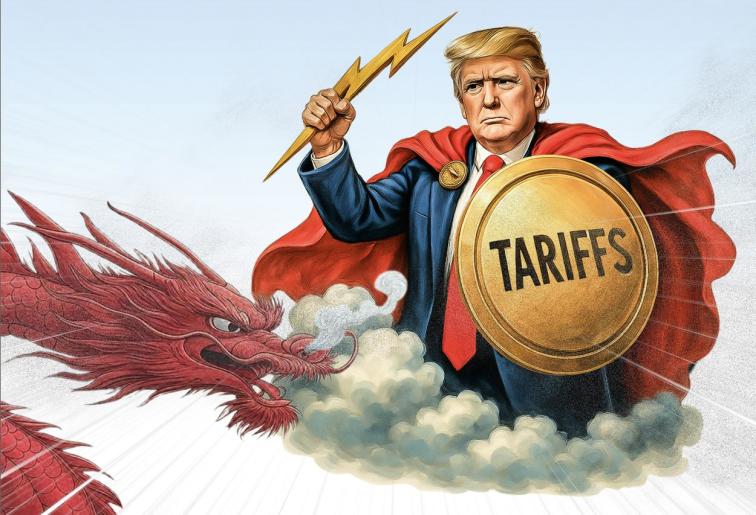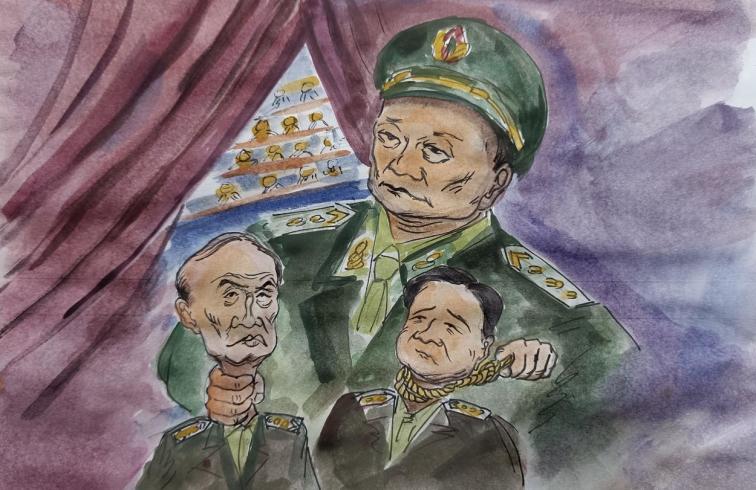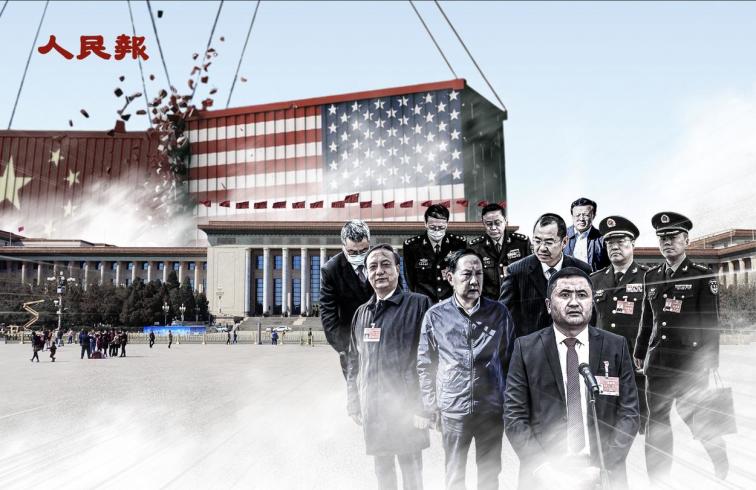U.S.-China Confrontation. (Video screenshot)
[People News] On April 14, 2025, Chinese President Xi Jinping began a visit to Vietnam, Malaysia, and Cambodia in an effort to find a breakthrough amid the immense pressure of the United States' 145% tariffs on Chinese goods. The first stop was Vietnam, where Xi met with the General Secretary of the Communist Party of Vietnam, Nguyen Phu Trong, signing around 40 cooperation agreements covering railways, supply chains, and green energy. U.S. President Donald Trump quickly responded, stating that Xi’s visit to Vietnam was “an attempt to mess with America,” but added, “I don’t blame Vietnam, and I don’t blame China either,” even referring to Xi as “still a friend.” Previously, Trump had postponed tariff hikes for 90 days for 75 countries, reducing tariffs on Vietnam from 46% to 10%, while raising tariffs on China alone to 145%. In response, China imposed retaliatory tariffs of 125%. Against the backdrop of escalating tariff wars, what is Xi Jinping’s intention with his Southeast Asia tour? And how is Trump responding strategically?
Trump’s response combined sharpness with flexibility. By labeling Xi’s visit to Vietnam as an effort to “mess with America,” he exposed China’s intent to divide U.S. allies, while his comment “not blaming Vietnam” served to win over Southeast Asian countries—a display of diplomatic finesse. Trump’s tariff strategy has proven effective: by deferring tariffs and lowering them to 10% for 75 countries, he has successfully encouraged negotiations with Japan, the EU, and others, pushing China into isolation. The tariff reduction for Vietnam is particularly clever. Although Vietnam had a trade surplus of $123 billion with the U.S. in 2024, Trump warned it not to become a “backdoor” for Chinese goods. This pressure led Vietnam to maintain distance during Xi’s visit, with most agreements being symbolic rather than substantive. Trump’s confidence comes from his accurate grasp of China’s economic vulnerabilities and his control over allies, effectively limiting Xi’s diplomatic maneuverability.
Xi Jinping’s Southeast Asia tour aimed to break through the tariff blockade but was constrained by multiple factors. Vietnam is China’s largest trading partner (bilateral trade grew 14.6% in 2024) and a key channel for transshipment to bypass tariffs. Through agreements on railways and supply chains, Xi sought to deepen bilateral integration and ensure Chinese goods could enter the U.S. market via Vietnam. However, Vietnam’s heavy reliance on the U.S. market (25% of its exports go to the U.S.) makes it reluctant to fully align with China. Under the pressure of Trump’s tariff exemptions and warnings, Vietnam is leaning toward balancing between China and the U.S. While Malaysia and Cambodia are supportive of China, their economic size is small (combined GDP less than half of Vietnam’s), making it hard to offset the loss from decreased U.S. exports. Xi also published an op-ed in Vietnam’s People’s Daily, calling for opposition to trade wars and advocating multilateralism, but Southeast Asian nations are prioritizing their own interests, giving Xi a tepid response. His diplomatic efforts appear stretched thin in the face of Trump’s global maneuvering.
In the context of the tariff war, Xi Jinping’s trip has limited effect. China’s economy is under immense pressure from the 145% tariffs—if its exports to the U.S. collapse (which accounted for 16% of total exports in 2024), it could trigger mass factory closures and unemployment. A sluggish property sector and ballooning debt further suppress domestic demand, narrowing Xi’s options. Trump is leveraging China’s economic fragility, using tariffs as a bargaining chip to trap China in both economic and diplomatic dilemmas. Although China has retaliated with 125% tariffs and restrictions on rare earth exports and Hollywood films, these measures have minimal impact on the U.S. and only further isolate China. Xi’s attempt to stabilize ties with Southeast Asia cannot fundamentally change China’s disadvantaged position in trade negotiations.
Trump’s strategy shows long-term vision. On April 12, he announced exemptions on tariffs for tech products to ease pressure on U.S. businesses and consumers, helping stabilize the U.S. stock market (the S&P 500 surged 9.5% on April 9) while maintaining maximum pressure on China. This “carrot and stick” approach reassures allies while cornering China. Trump predicted Xi “would make the call” to negotiate, signaling his confidence in China’s economic predicament. Meanwhile, Xi is relying on nationalist propaganda to maintain morale, making any public concession in the short term difficult.
Xi Jinping’s Southeast Asia visit may temporarily stabilize regional cooperation, but it cannot reverse the passive position China finds itself in within the tariff war. Trump’s strategy of dividing opponents and isolating China allows him to set the pace of global negotiations. The fragility of China’s economy deprives it of the stamina for prolonged resistance, while the limited support from countries like Vietnam further underscores its diplomatic isolation. In the coming months, the tariff war may enter a stalemate, but under economic pressure, the Chinese Communist Party will eventually be forced to yield. Trump’s precise pressure tactics and alliance-building have given him the upper hand. No matter whether the CCP chooses open compromise or delay tactics, it is unlikely to escape a reactive, losing position in this trade war.
(Originally published by People News)











News magazine bootstrap themes!
I like this themes, fast loading and look profesional
Thank you Carlos!
You're welcome!
Please support me with give positive rating!
Yes Sure!